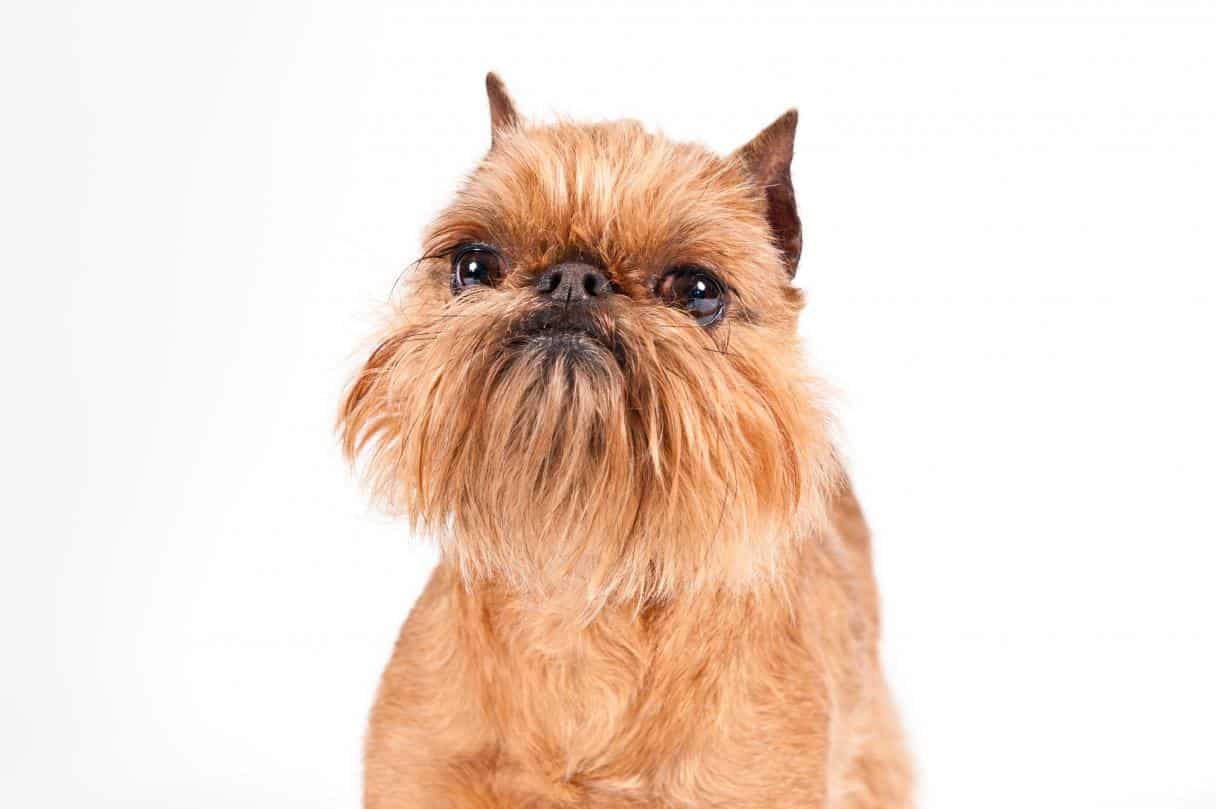There are two types of Brussels Griffon – the Rough and the Smooth. This breed comes in three colors (red, black, and black and tan). The Smooth coat is comparatively easy to groom, only necessitating brushing with a natural bristle brush, and using a pair of curved scissors to remove hair from between the toes and to remove the curl that forms at the end of the tail.
A very fine comb is useful when the Smooth is molting to speed up hair removal. The tail can be also trimmed underneath and around the anus area for tidiness. The Rough coat requires more detailed stripping.
Equipment needed: Bristle brush, small slicker, medium-toothed comb, fine-toothed comb, thinning scissors and tweezers.
Breed tip: This is a rugged little dog that should look natural and not overly trimmed. Some Griffons lack undercoat, so will look a little bare for a few weeks after being stripped.
- Work though the coat with a bristle brush, and comb through with a medium-toothed comb. Lift a few hairs on the back between your finger and thumb and gently pull. If the hair comes out easily, the coat is ready to strip.
- Commence stripping the topcoat at the withers or base of the neck between the shoulder blades, and continue stripping down the back and side of the tail. Always strip with the growth of the hair toward you.
- Remove the long hairs from the dog’s thighs, taking care to retain a balanced outline.
- Remove the thick hair growing on the back of the hindlegs below the hock. Also remove the longest hairs from the front of the legs and feet. Overstripping here can make the feet look long as opposed to the desired catlike appearance.
- Strip the shoulders around to the chest, removing long hairs from the leg.
- Strip the long hair on the outside of each shoulder, down to the elbow to present a straight front.
- The chest is now stripped at the front to the lowest point.
- Scissors or clippers (Oster No. 10) can be used under the stomach and around the sensitive genital area.
- Look over the complete picture of the dog as it stands on the table and remove stray hair that detracts from a smart, balanced look.
- The head: start behind the eyes, being careful to strip only a few strands of hair at a time. Work back to each ear and over the top of the head. Leave some longer hairs over the eyes to form eyebrows. Strip the back of
the ears, down to the chest. Continue down the side of the neck toward the jawbone, to give a distinct beard and blend in to the chest. - Comb the beard forward to enable you to pluck the ear and below the beard to the throat to give a clean neckline, and to accentuate the head. Remove long hairs from the inside of the ear. The edge of the ear can be closely trimmed with scissors to give a neat finish.
- The stop (the point between the eyes, just above the nose) is a tender part and may need tweezers to remove a small amount of hair.
- Hairs from the corner of the eye should be removed with tweezers or curved scissors to prevent them sticking into the eye or accumulating debris.
- The hair of the beard that adjoins the ears can be removed in a direct line from the corner of each eye.
- Tidy around the anus with scissors or thinning scissors to give a neat finish.
- Trim the hair from under the feet and between the toes.
- Bathe the Griffon in a natural mild shampoo, and rinse well.
- Towel-dry thoroughly. Cage or lightly blow-dry.
- Check the dog’s nails, ears and teeth.
- For the pet, a complete strip twice a year is fine with a little tidying in between.
- The show strip is ideally done in stages – side of body and legs first, then back, then head, as they grow in different stages.
- The pet dog can be trimmed lightly with a coarse blade if required, rather than hand stripped.

